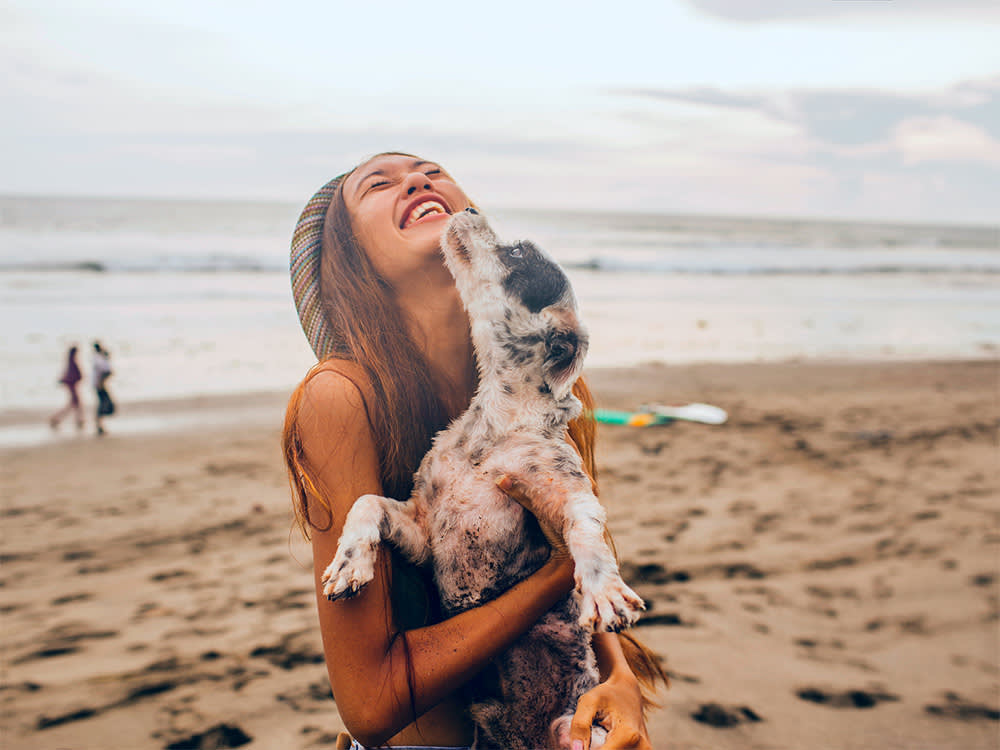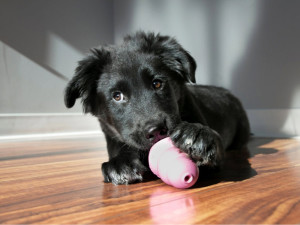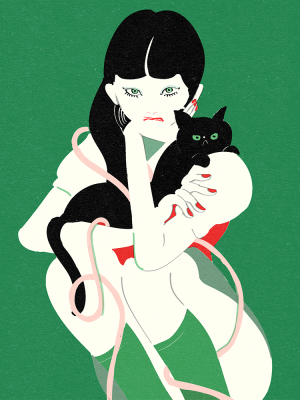What Are the Dog Days of Summer?
It does have something to do with dogs, believe it or not

Share Article
Before Hot Girl Summer, there was the dog days of summer – that scorching stretch that runs reach year from 3 July to 11 August. Nowadays, pet parents associate it with lazy days when dogs are so hot they just want to lay in the shade and sip an ice-cold Puppuccino. But his time of year has been wreaking havoc since ancient times, and held a special significance in Greek and Roman civilizations.
Learn everything you ever wanted to know about the ancient origins of this phrase and what it means for you and your pup in modern times.

Get (totally free) deals for food, treats, accessories, tech and way more pet parenting must-haves.
opens in a new tabThe dog days of summer explained
Many people think the phrase ‘dog days of summer’ is an idiom where the words don’t literally mean what they say, but the truth is that when you learn the origins of the term, it was quite literal for them. Technically, people referred to this time of year as the ‘days of the dog star’.
Ancient Greek and Roman cultures were heavily influenced by astrology and stories of the constellations. They had intricate mythology explaining what they saw in the night sky and used those stories to explain the unexplainable in their lives, including the change of seasons and how it impacted peoples’ behaviour. When people noticed a connection between the hottest time of the year and a change in the pattern of Sirius, the brightest star in the sky, they knew it was more than just coincidence. To them, it seemed that when Sirius rose and set with the sun, it was adding warmth to the sky, explaining the extreme heat of this time of year.
In ancient Greek, Sirius means ‘glowing’ or ‘scorcher’ so it makes sense that they named this star after the extreme summer heat in the Mediterranean. The myth behind Sirius is that he is the loyal pup of the hunter Orion. Most novice astronomers are familiar with Orion and can at least identify Orion’s beltopens in a new tab in the night sky as three stars forming a straight line.
Ancient Greeks and Romans’ knowledge of constellations was much more intricate, and they envisioned the image of a dog when they connected the stars closest to Sirius, right next to the constellation of Orion. Ancient Romans referred to this constellation containing Sirius as Canis Major, which translates to ‘greater dog’. In ancient Rome, this same period of time where the sun and Sirius rose and set together was known as dies caniculares, which translates to ‘days of the dog star’.
As this phrase was adapted into English, it slowly morphed into ‘dog days of summer’, a literal description of Sirius’s location in the sky during this time of year. For ancient Greeks, this time of year was nothing to celebrate. In Homer’s opens in a new tab, Sirius is said to “bode no good… to us mere mortals,” in reference to the sluggishness many people feel on these brutally hot days and the concerns that the rising of Sirius caused plants to wither and people to act strangely, or ‘starstruck’. Dogs were thought to be most affected by the rise of Siriusopens in a new tab because of the way they pant with their tongues hanging out, and ancient people feared their saliva could become rabid during this time of year.
More on Sirius, ‘The Dog Star’
In ancient Greek mythology, Sirius is known to be the loyal dog of the hunter Orion. But the tales of Orion are not very flattering. Orion was known as an excellent hunter – just ask him to find out how absolutely amazing he was. He was a braggart, an alcoholic and a sexual predator, which got him into all sorts of trouble in the Land of the Gods. He was blinded, banished and eventually killed.
There are multiple versions of the story of how he was killed, including one in which he brags to the goddess Gaia that he could hunt and kill every animal on earth, so she kills him with a giant scorpion who is also immortalised in a constellation. Through it all, Sirius, his loyal canine companion, is by his side. Sirius’s eternal loyalty follows him into the afterlife where he forms the brightest star next to Orion’s constellation. Sirius is forever by Orion’s side despite his major flaws, providing historical proof that we truly do not deserve dogs.
Actually, many cultures around the worldopens in a new tab have similar myths about the constellation containing Sirius and envisioned a dog or other canine, such as a wolf or coyote, associated with this star. In China, this same star is known as Heavenly Wolf. For the Alaskan Inuit, this star is called Moon Dog. In Cherokee lore, this star is a dog star that guards the entrance to the Milky Way, known as the Path of Souls. Some Pawnee tribes refer to this same star as a trickster called the Coyote Star.
Other cultures also had significant events they associated with Sirius, though they referred to the star by other names. In ancient Egypt, the rising of Sirius coincided with the flooding of the Nile River every year. In the southern hemisphere, the rising of Sirius is associated with the opposite changes in season. For New Zealand’s Maori culture, this same star was referred to as Takura, which is also the word used to mean winter, as the rise of the star in the Southern Hemisphere marked the coldest weather of the year.
Because of the way the earth rotates, the position of stars in the skyopens in a new tab is always gradually shifting. Although the dog days are currently a summer phenomenon, the dates when Sirius lines up with the rising of the sun will occur later and later in the year over time. Thousands of years from now, the rising of Sirius will coincide with the dead of winter in the northern hemisphere, so future generations may refer to this as the ‘dog days of winter’.
Modern interpretations of the dog days of summer
Over time, as we have lost the direct connection to the explanation of the phrase, people have substituted their own ideas for what is meant by the ‘dog days of summer’. This includes the idea of sweltering hot days when dogs are more likely to act up, as well as descriptions of a time of the year when dogs laze about because they are too hot to do anything else. While none of these explanations are tied directly to the origins of the phrase, hot summer days do bring unique risks to dogsopens in a new tab and require some additional considerations to keep your pup comfortable and safe.
Special considerations for your dog during the dog days of summer
Be mindful of the heat and take measures to prevent heat strokeopens in a new tab and other seasonal dangers during this time of year. This includes avoiding exercise with your pupopens in a new tab during the hottest times of day and making sure they have a cool place to rest with plenty of water throughout the day. Dogs should never be left alone in an enclosed vehicle, especially on warmer days. Be cautious with brachycephalic breeds, such as French Bulldogs, Boston Terriers, Bulldogs, Pugs and Pekingese; they can overheat much more quickly, as well as any dogs with underlying health conditions and dogs who are very young or very old.
Other factors to keep in mind are that this time of year may bring more opportunities for swimming, barbecues and outdoor celebrations. Be sure pups are always supervised near open water as not all dogs are good swimmers and can fatigue quickly if they cannot get out of the water on their own. Also, keep all the delicious barbecue scraps away from your pup. They can get especially sick from ingesting pointy bamboo skewers if they find a little bit of meat still attached, as well as from sweetcorn cobs, fruit pits, bones and foods with ingredients that may be toxic to them.
Finally, we all likely know of at least one dog, and maybe a few people, who are terrified of the sound of fireworksopens in a new tab. Be sure to create a safe, quiet space for your dog during these kinds of celebrations and consider speaking with your veterinarian about a safe sedative for your pup if they are extremely stressed by these sounds.
While the ancient Greeks may be right that these hot days make dogs pant so hard their tongues look like fruit chews, summer can be lots of fun for pups with the right precautions. As for the strange behaviours it causes in people, you may want to monitor your horoscope more closely during these dog days of summer.

Dr. Amy Fox, DVM
Amy Fox, DVM is a small animal veterinarian in New York City. A lifelong animal lover, Dr. Fox studied biology in college and then worked as a veterinary nurse before pursuing veterinary school at Cornell University. She has worked in many different settings including shelter medicine, emergency medicine, general practice, and animal cruelty and forensics. She is especially interested in nutrition, preventative medicine and care for senior pets. Dr. Fox also enjoys writing about veterinary medicine and teaching. In her free time she loves to cook, garden, and go for long runs.
Related articles
![a woman with black hair, green eyes, and red nails hugs a black cat]() opens in a new tab
opens in a new tabBlack Cats: Good Luck Charms Or Bad Omens?
Let’s dispel some silly superstitions
![Queen Charlotte (India Amarteifi) and her dog in the Netflix series Queen Charlotte.]() opens in a new tab
opens in a new tabThe Real History of Queen Charlotte and Pomeranians
The titular star of Netflix’s Queen Charlotte started the royal family’s obsession with Pomeranians
![A woman with black hair and green sunglasses hugs her brown Doodle dog]() opens in a new tab
opens in a new tabShould You Put Your Pet In Your Dating Profile?
Apparently it’s a great way to find a match
![]() opens in a new tab
opens in a new tabThe Story Behind the Iconic Cat Eye
This feline-inspired makeup trend continues to reign supreme








